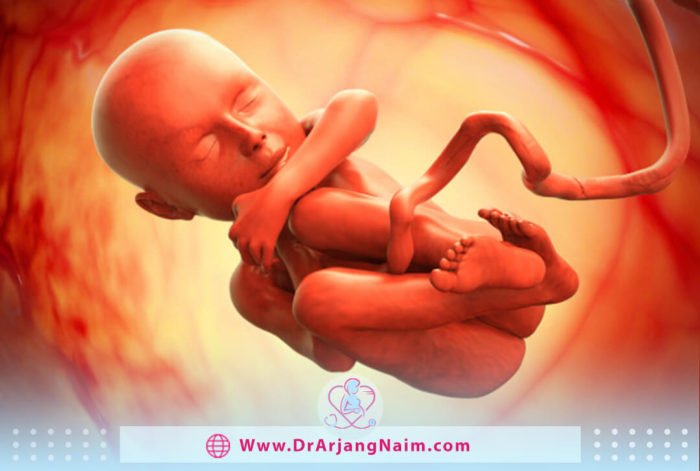Placental abruption (abruptio placentae) is an abnormal complication during pregnancy. The placenta supports the baby in the womb. If the placenta does not work correctly, the baby is at risk for health problems. The placenta is a new organ in the body of pregnant women that forms only during pregnancy and in the inner wall of the uterus or endometrium and leaves the uterus after delivery. The placenta is responsible for maintaining, supporting, and facilitating fetal growth.
This highly efficient organ is the place where the mother and fetus connect. The placenta delivers nutrients and oxygen to the fetus through the umbilical cord and removes and purifies waste products from the fetus. Placental abruption occurs when the placenta separates completely or partially from the uterus’s inner wall before delivery. This can reduce the oxygen and nutrients in the baby and cause severe bleeding in the mother. Placental abruption often occurs suddenly. Without treatment, it endangers the mother and baby.
Signs and symptoms

Placental abruption affects about 1% of pregnant women. It can occur after the twentieth week of pregnancy but is most common in the third trimester. It usually happens suddenly. A pregnant mother usually has vaginal bleeding, but the amount of blood can vary, keep in mind that not every bleeding indicates abruption placental. Other symptoms include:
- Pain in the belly or back
- Tenderness or quick, repeated contractions in the uterus
- Fetal distress, for example, abnormal heart rhythm
Premature separation of the placenta can occur slowly, called chronic abruption. Its symptoms include:
- Light vaginal bleeding that happens on and off
- Low amount of amniotic fluid
- Baby isn’t growing as fast as they should
Causes

Most of the time, doctors do not know the cause. But drinking alcohol or using cocaine during pregnancy can increase the risk. Other factors can also play a role.
Placental abruptions in previous pregnancies
If a placental abruption has occurred in previous pregnancies, the chance of recurrence is 10%.
Smoking
Studies show that women who smoked before pregnancy increased the placental abruption risk by 0% per year.
High blood pressure
Suppose the pregnant mother has high blood pressure before and after pregnancy. In that case, she must control it during pregnancy with the help of an obstetrician to prevent damage to the placenta and fetus.
Problems with the amniotic sac
The sac in which the fetus grows contains amniotic fluid; if something breaks or leaks before preparing for delivery, the chances of the placenta separating increase.
Getting pregnant later in life
If the mother is over 35, the probability of abruptio placentae increases; in women 40 or older, this probability increases even more.
Carrying more than one baby
The risk of placental abruption is higher for a pregnant mother with twins, triplets, or quadruplets or more than for a mother who is pregnant with a fetus.
Abdominal trauma
In the event of an impact, an accident, or any other blow to the abdomen can cause placental abruption.
A pregnant mother cannot prevent the placenta from separating but can reduce the risk by not using tobacco, alcohol, and drugs.
Complications
If only a small part of the placenta separates, it may not cause much trouble. But if a large part or all of it disconnects from your uterus, it can cause serious harm to the mother and baby. These injuries include:
- Problems with blood clotting
- Loss of large amounts of blood that can shock the mother or require a blood transfusion
- Kidney failure or failure of other organs
- Possibility of death for the child and mother
Complications with the baby include:
- Premature birth: This means that the baby was born before 37 weeks. About 10% of babies born to mothers with placental abruption fall into this category.
- Problems with development: If the baby is born prematurely due to placental abruption, it may have health problems.
Diagnosis
The signs and symptoms of abruptio placentae are similar to other pregnancy conditions, such as placenta previa and preeclampsia. Items that can help diagnose include:
- Medical history
- Physical examination
- Internal examination of the vagina and cervix
- Blood tests
- Ultrasound to check the placenta
- Fetal heartbeat monitoring
Treatments
Treatment of placental abruption in pregnant women for whom this occurs depends on the severity of the separation. The doctor will determine if abruptio placentae are mild, moderate, or severe and treat it accordingly.
Mild
Mild placental abruption occurs at 24 to 34 weeks of gestation. In this case, the doctor may prescribe medication to speed up the baby’s lung growth. If the mother’s bleeding seems to have slowed, the doctor may send the mother home. Otherwise, they must stay in the hospital for close monitoring. If mild separation occurs at 34 weeks or more, close to the baby’s delivery, the doctor may perform a cesarean delivery.
Moderate
The mother may need to stay in the hospital until the baby is old enough for the doctor to induce labor safely. The doctor may prescribe medications to help the baby’s lungs grow faster before birth.
Severe
Immediate delivery is the safest treatment. The mother may need supportive care. Severe maternal bleeding may be treated with a blood transfusion or hysterectomy.
Prevention
While it is impossible to prevent placental abruption, the risk can be reduced; strategies that reduce include:
- The pregnant mother should avoid all substances during pregnancy, including smoking, alcohol, and drugs. Smoking increases the risk of placental abruption and other complications of pregnancy. Arbitrary use of drugs, especially those containing cocaine, can increase the risk of placental abruption.
- The pregnant mother should go to all prenatal appointments so the midwife can ensure her blood pressure is controlled and refer her to a doctor if there is a problem.
- The abdomen should be protected during pregnancy. It makes sense that any strenuous exercise or risk of injury should be protected during pregnancy.
- Talk to the doctor if you have a history of placental abruption.
Will placental abruption happen again?
It is unlikely that the placenta’s premature separation will recur in subsequent pregnancies, but it is more likely in mothers who have experienced it. In women who have had abruptio placentae before, one in seven people is likely to have it, and in mothers who have had abruptio placentae in two pregnancies, there is a chance of it one in five.
As you know, a women’s pregnancy is a very delicate stage. In particular, the final weeks of this period, approaching the delivery time, will be much more important. There is a risk of premature separation of the placenta from the women’s uterine wall in these stages of pregnancy.
Placental abruption is often an emergency, so the pregnant mother should know the symptoms. During the examination, the doctor may notice signs that indicate the possibility of placental abruption in the future. Depending on the severity of the abruptio placentae, the doctor may need to see the mother hospitalized and monitored or perform a cesarean section immediately.
Arjang Naim, MD examines all the risk factors that may be dangerous for the fetus and mother by performing timely examinations and taking the necessary measures.
Additional questions
- What are the four types of placentas?
- Posterior placenta
- Anterior placenta
- Fundal placenta
- Lateral placenta
- How big is a placenta?
In humans, the placenta is an average of 22 cm long and 2-2.5 cm thick, with the center being the thickest and the edges the thinnest. It usually weighs approximately 500 grams.
- Does placental abruption happen suddenly?
Placental abruption occurs when part or all of the placenta moves away from the uterine wall during pregnancy. This is a medical emergency and often happens very suddenly. A placental abruption can cause severe pain and bleeding.
- What is the death rate of placental abruption?
Placental abruption is often a life-threatening obstetric emergency for the fetus, associated with prematurity, stillbirth, hypoxia, and major congenital anomalies. Perinatal mortality is ~10%.
- How much bleeding is normal in early pregnancy?
Bleeding during the first trimester of pregnancy is common and may or may not be a sign of a problem. It can range from light brown spotting to bright red bleeding, may last from a day to weeks, and may be accompanied by mild cramping or back pain.
References
https://www.marchofdimes.org/complications/placental-abruption.aspx
https://www.babycentre.co.uk/a1024974/placental-abruption
https://www.betterhealth.vic.gov.au/health/healthyliving/placental-abruption
https://www.healthline.com/health/pregnancy/complications-placental-abruption




